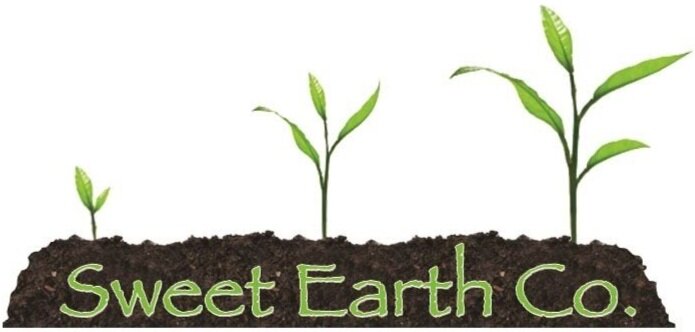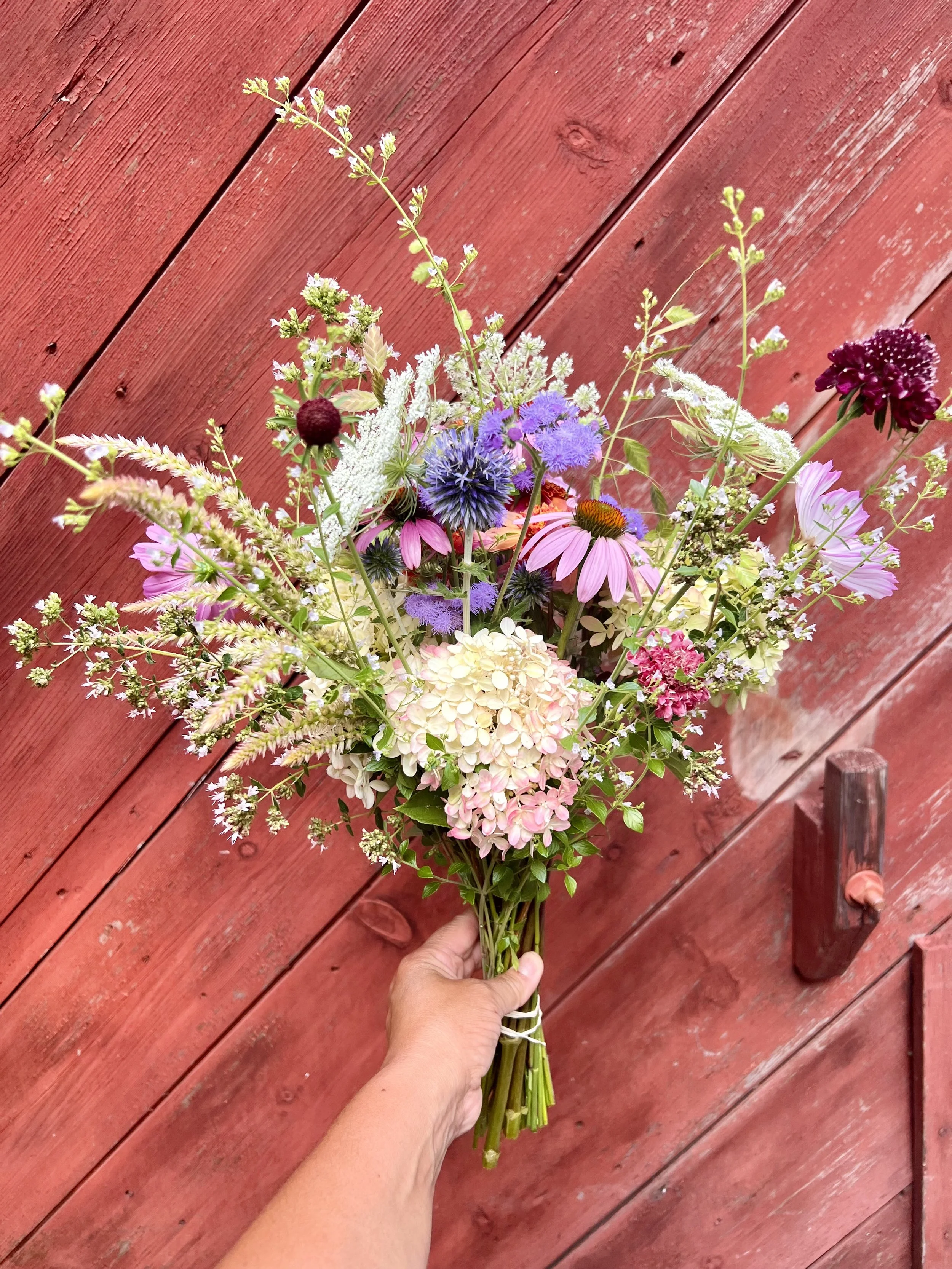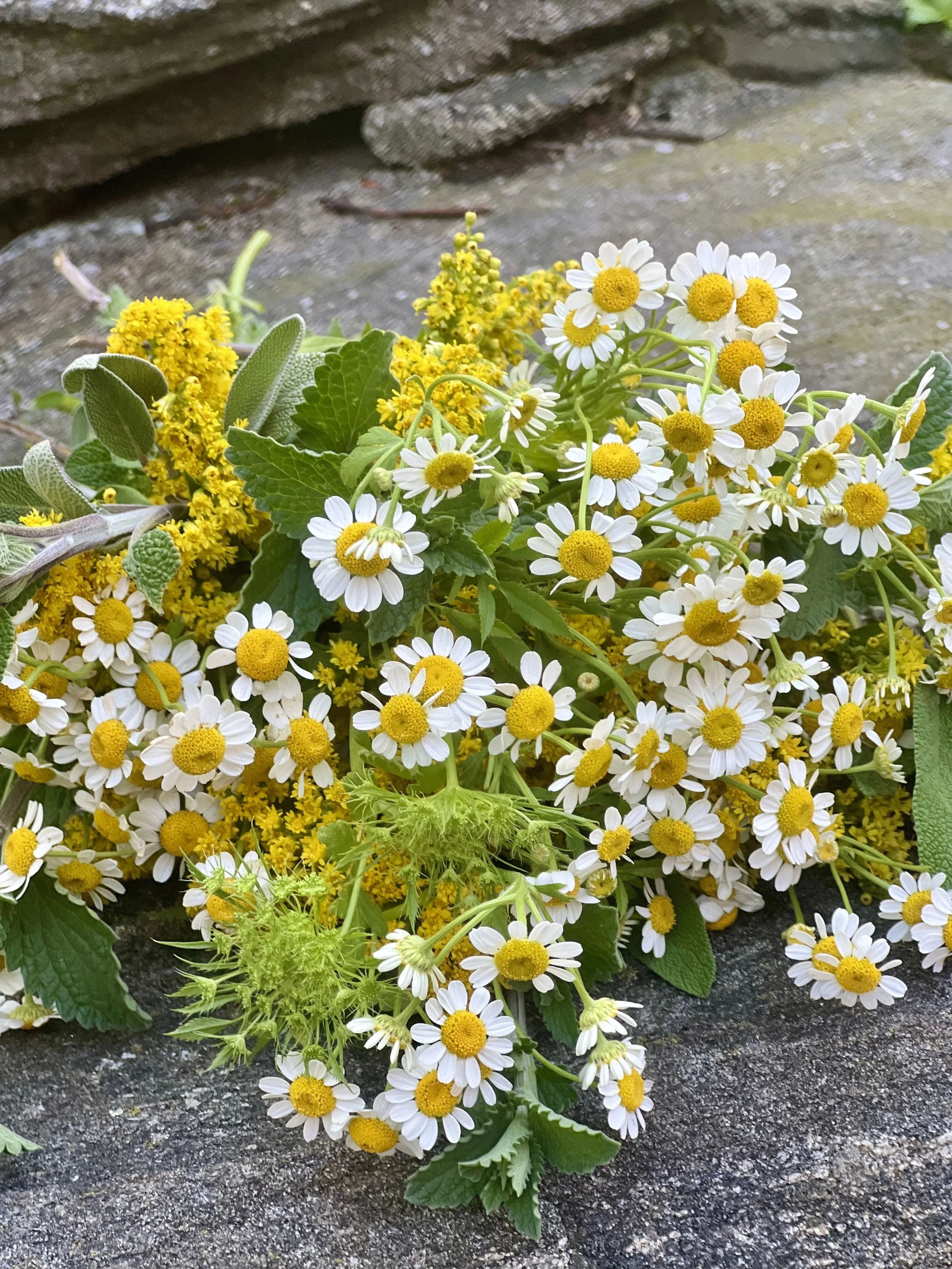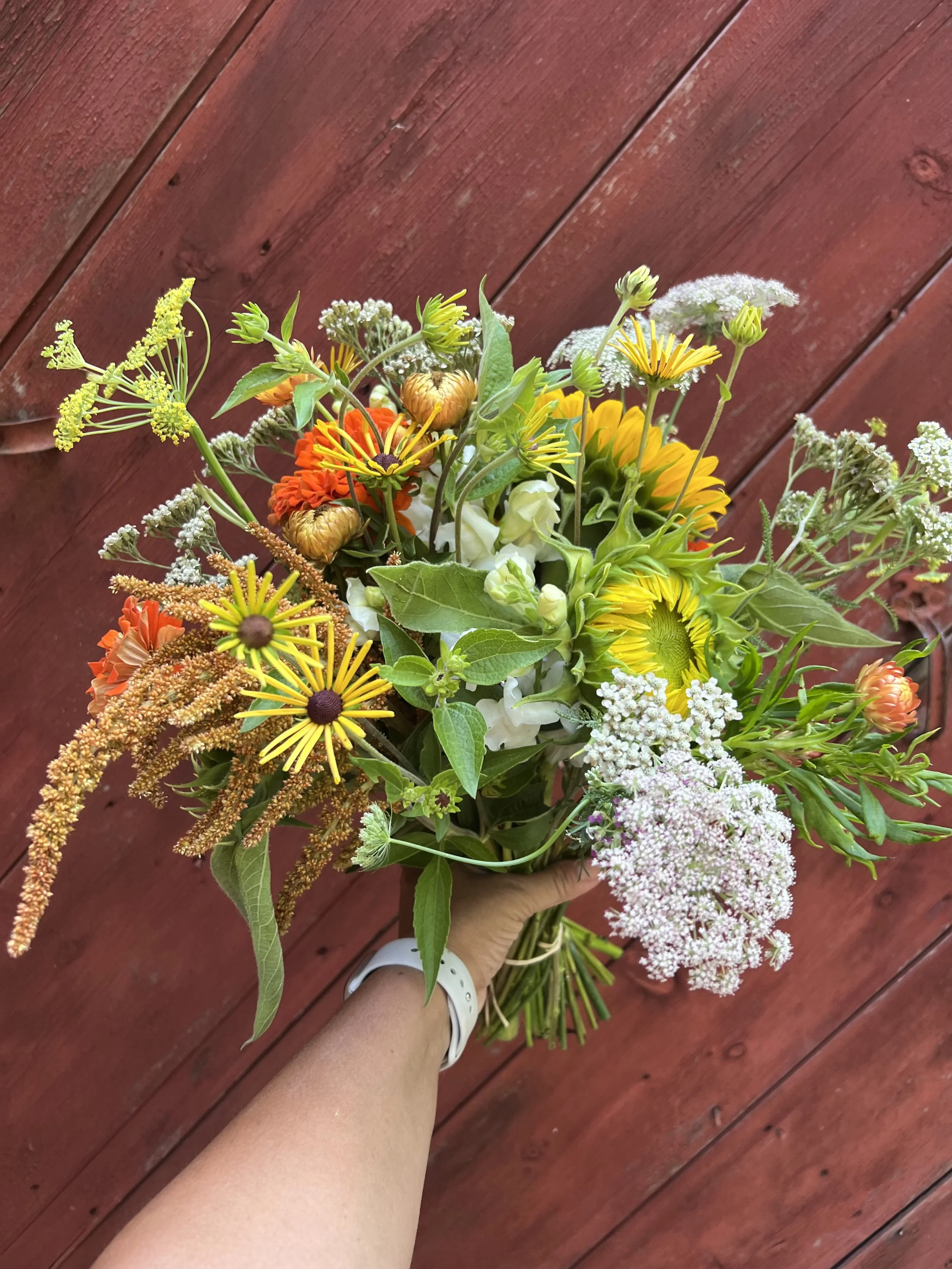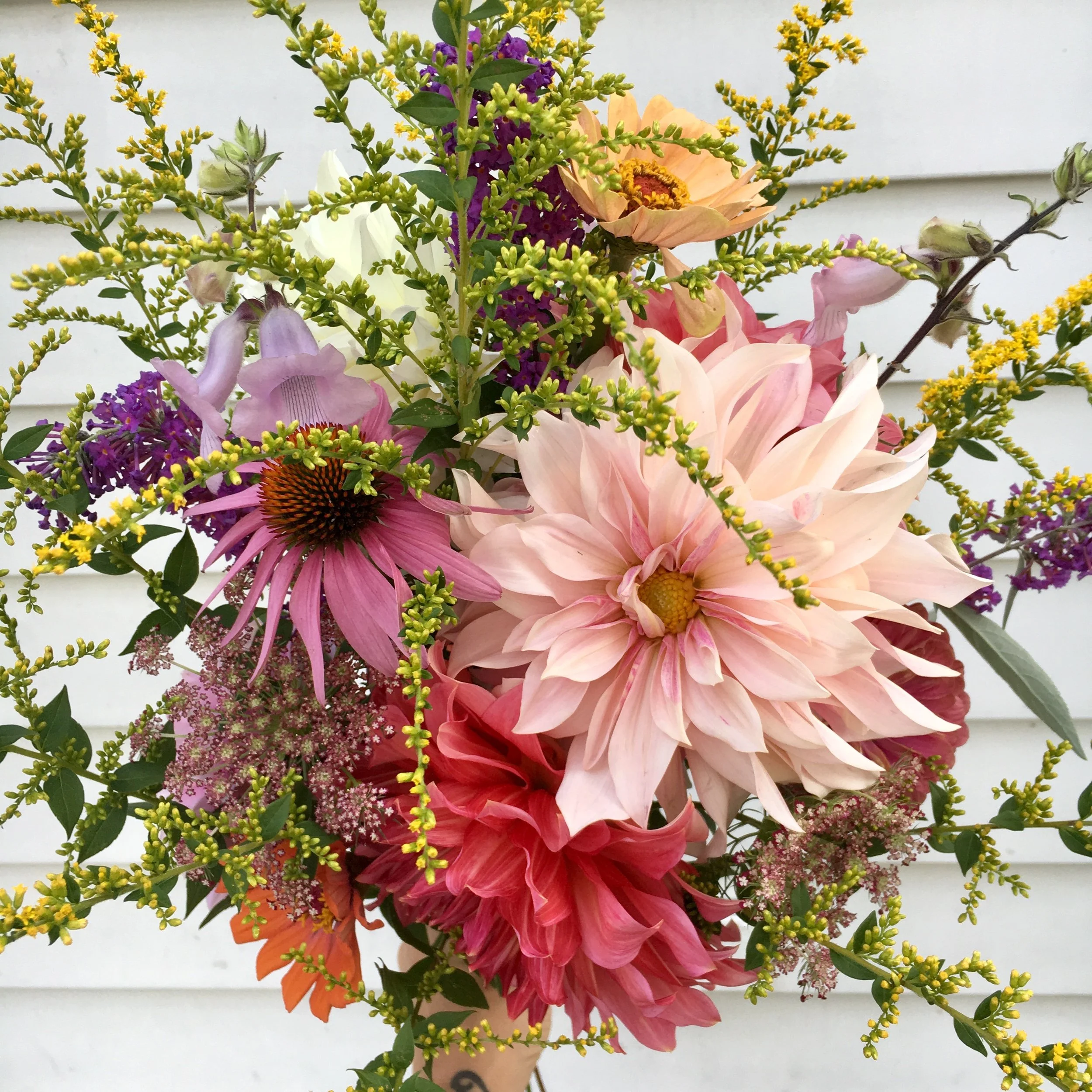5 Native Plants to Grow and What to Pair Them With in the Garden or Vase
If you're passionate about growing beautiful gardens and supporting local ecosystems, incorporating native plants into your garden or cut flower arrangements is a powerful way to do both. Native plants are adapted to local conditions, provide habitat and nectar for pollinators, and bring a sense of place to your arrangements. Plus, they pair beautifully with many cultivated flowers and foliage varieties.
Here are five native U.S. plants that are both garden-worthy and floral design-friendly, along with suggestions for what to pair them with.
Why Native Flowers?
Planting native flowers and plants is a great way to practice eco-gardening. Native plants help attract biodiversity to your landscape while using fewer resources, such as water and pesticides, among other benefits. You can read more in detail about the benefits native plants bring to your garden here.
Sweet Earth Co. is based in the Northeast, so we’ll share some plants native to this region. You can learn more about what plants are native to your area here.
#1 — Echinacea (Coneflower)
Native Range: Central and Eastern U.S.
Coneflower
Best Pairings:
Flowers & Fillers — Delphinium, Hydrangea, or Cosmos
Foliage — Baptisia, Spirea, or Amsonia
Echinacea, Hydrangea, Spirea, Scabiosa, Ageratum and Queen Anne’s Lace are some of the flowers featured in this bouquet.
With their bold centers and wide petals, coneflowers bring texture and structure to both gardens and bouquets. They bloom over a long season and attract pollinators like birds, bees, and butterflies.
In arrangements, they add a rustic and naturalistic touch. They are valuable to the winter garden as birds forage on their seedheads. They are also a valuable medicinal plant; its petals, stems, and roots are edible.
#2 — Monarda (Bee Balm)
Native Range: Eastern & Central U.S.
Bee Balm
Best Pairings:
Flowers & Fillers — Yarrow, Snapdragons, or Agastache
Foliage: Dusty Miller, Scented Geranium, or Eucalyptus
Yarrow
Eucalyptus
Bee balm offers vivid color and a wonderful fragrance. It’s a favorite of hummingbirds and butterflies, and its shaggy, spiky blooms add textural interest to floral designs. In the garden, it thrives in moist soil and full sun.
#3 — Phlox Paniculata (Garden Phlox)
Native Range: Eastern & Central U.S.
Garden Phlox
Best Pairings:
Flowers & Fillers — Feverfew, Queen Anne’s Lace, or Dahlias
Foliage — Mountain Mint, Lemon Verbena, or Amaranth
Dahlias
Feverfew
With its tall stems and cloud-like clusters of blooms, garden phlox adds height, fragrance, and a soft elegance to borders and bouquets. Native varieties come in shades of pink, white, and lavender and are especially attractive to butterflies. Garden phlox blends well with both cottage garden and wildflower-style plantings.
#4 — Rudbeckia Hirta (Black-Eyed Susan)
Native Range: Most of the U.S., especially Central and Eastern regions
Black-Eyed Susan
Best Pairings:
Flowers & Fillers — Zinnias, Joe Pye, or Ageratum
Foliage — Smokebush, Bouquet Dill, or Amaranth
Black-Eyed Susan, Dill, Amaranth, Zinnias, Sunflowers, Strawflowers, and Yarrow are some of the flowers featured in this bouquet.
A classic prairie flower, Rudbeckia brings golden warmth to borders and bouquets alike. These long-lasting blooms hold up well in arrangements and contribute to that “wildflower meadow” aesthetic that’s both nostalgic and contemporary.
#5 — Solidago (Goldenrod)
Native Range: Most of North America
Goldenrod
Best Pairings:
Flowers & Fillers — Strawflowers, Sunflowers, or Dahlias
Foliage — Ninebark, Sedum, or Mountain Mint
Goldenrod, Coneflowers, Dahlias, and Zinnias are some of the flowers featured in this bouquet.
Often misunderstood as a cause of allergies (it’s not!), goldenrod is a hardworking, pollinator-friendly plant that brings rich yellow color and a branching form perfect for bouquets. It adds movement and fills space beautifully. It is also the number one keystone plant in my ecoregion.
Region Matters: How to Choose Native Plants That Truly Belong
While these five plants are native to wide swaths of the United States, it’s important to select native species that are specific to your region. For example, Echinacea purpurea may be native to the Midwest and Southeast, but the West Coast has its own native wildflowers better suited to its climate and pollinators.
It’s even better to refine your choices and include keystone plants. According to Homegrown National Park®, a non-profit organization on a mission to regenerate biodiversity, “Keystone plants are the most productive plants that support the most species.”
Without certain important plants, entire ecosystems can begin to collapse, as these plants provide vital food and habitat for insects, birds, and other animals.
Keystone plants are an important building block of biodiversity. By supporting them in our gardens, we are helping to preserve local ecosystems and promote biodiversity.
You can find keystone plants that are native to your ecoregion here. In addition, plant societies and databases like the Lady Bird Johnson Wildflower Center or Audubon Native Plants Database can help you identify the most appropriate selections for your zip code.
Whether you’re planning a pollinator garden, a cutting garden, or designing a bouquet, native plants can offer beauty, resilience, and ecological value. Start with just one or two and experiment pairing them with your favorite flowers and foliage; you might be surprised how seamlessly they fit into both wild and cultivated spaces.
What’s Next?
Continue learning about eco-gardening and designing with flowers in these resources:
🌎 How eco-friendly is your garden? Find out in our free audit.
💐 Download this free guide all about designing better bouquets.
🤔 Take our free quiz to learn what kind of flower gardener you are.
👩🌾 Learn more about our signature program, which will teach you how to start and maintain an eco-friendly cutting garden.
